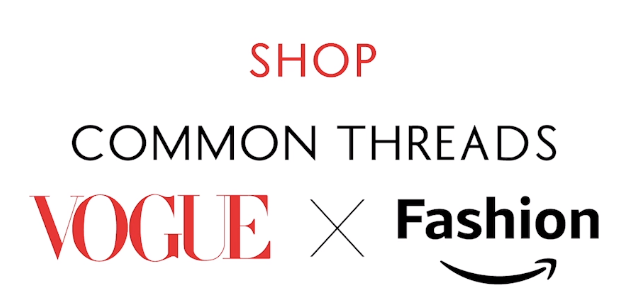Amazon, the dominant marketplace in North America has always wanted to be the everything store. Amazon Fashion, however, seems to a rudder-less business that is tone-deaf and looking to be a savior amidst COVID-19 horrific impact on the apparel sector.
Amazon Fashion A Non-Premium Experience

I have been following Amazon, a company that has leveraged algorithms and data to dehumanize and remove any social element to commerce. Fashion remains elusive to Amazon’s mission to be the platform where consumers can experience an endless aisle. Amazon has become the largest apparel seller in the US, yet it has not conquered fashion and its intricacies.
Research firm Coresight Research indicated that currently, Amazon Fashion is low-priced, non-branded fashion products in large numbers that will also scare off brands from listing their apparel on Amazon. Generic or un-branded merchandise increased in quantity by 906% between September 2018 and September 2019

Fashion as a category has nuances that enable companies like Richemont, LVMH, and others to determine who can and cannot sell their products to consumers. Premium brands controlling their supply has been a problem that no-one acknowledges as distributors and grey-importers can’t be leveraged by Amazon to add these products to its catalog. These same businesses have been outspoken in not wanting to be on Amazon.

Amazon has invested in creating private label brands to obfuscate the fact that it is trying to sell fashion products on its never-ending aisle. The investment into private labels is helpful to budget conscientious consumers looking for basic pants and shirts, but not for consumers looking to purchase exclusive limited-run luxury products. Another thing that flies below the radar in the fashion sector is minimum order quantities, which also makes the sector capital intensive and dependent on accurate trend analysis done by experienced fashion buyers and not done by a faceless algorithm.
Algorithms, content, and money won’t make brands. less concerned
Amazon has tried to solve its fashion problem through data by cloning StitchFix’s business and leveraging smart devices to provide consumer feedback on their outfits. While it is positioned as a consumer-solution, it is not; it is Amazon collecting data to scale its algorithms and offer relevant recommendations to millions of consumers. Fashion is an intensely personal category, and there is no logic to explain how consumers create outfits. Pairing a comfortable pair of jeans with Gucci loafers or Jimmy Choo heels is something that can’t be translated into software. Maybe I am an outlier, but I do not want to own and Alexa device, nor would I want it collecting data on my daily outfits.
Amazon’s biggest challenge is that is everyday low price mantra goes entirely against the fashion sector. Brands have aspirational value and want consumers to perceive quality through high prices to create exclusivity. There is a reason why a Hermes handbag sells for thousands of dollars, and it is seen as an investment piece. The fashion purchase journey is also not a case of transactional commerce. In most cases, it is a relationship between a consumer and boutique or personal shopper that can source any product even if its in short supply. Conversational commerce was supposed to recreate that well, it went nowhere and, in cases, led to startups closing down as scaling that interaction was hard.

Amazon also has over the last 18 months invested into fashion content by hiring Heidi Klum and Tim Gunn away from their show on Bravo, and recreate it on Amazon’s Prime Video platform. In hindsight, this did not just pay Klum and Gunn astronomical salaries. It also gave it access to emerging designers who need a platform to sell to consumers, and by accident Amazon’s fashion business could do just that. Supporting a local designer via a marketplace for me goes against the fashion industry as the relationship is not between the designer and consumer but somewhat between Amazon and the consumers.

The news this week that Amazon has partnered with Vogue and the CDFA to help designers is insightful into how opportunistic Amazon is and remains. COVID-19 has made consumers focused on essentials such as staples such as food and has directly lead to less money being spent on apparel. Amazon has invested $500k (which is a smidgen of its revenue) to help struggling fashion designers and legitimized it by partnering with Vogue and the CFDA. The experience will be subpar for all involved as these products will be all but impossible, as Amazon has become a pay for play marketplace and without investment into advertising will never be seen by consumers. I am guessing that Amazon wants the designers to market the products to their audiences to gain consumers that are looking for fashion.
Amazon’s DNA is counting against it.

Amazon will need to do the unthinkable and unlikely to win in fashion. Provide brands with total control over their stores, which can be customized similarly to how Alibaba’s Tmall offers its partner brands. Secondly, Amazon will need to step up its counterfeit protection to reassure brands that counterfeit products are not on its platform. Most importantly, Amazon will have to regain and win the trust of top-tier brands. There is little hope that Amazon will not throttle them on the need for discounts, exclusivity, astronomically high marketing costs.
Amazon is unlikely to do any of these as it has looked the other way in managing the anti-counterfeit problem and places immense pressure on brands to play by its rules.
Does Amazon have to purchase fashion houses that are financially depressed to have access to the luxury fashion sector finally? What happens if Anna Wintour leaves Vogue (a constant rumor) and joins Amazon Fashion?
